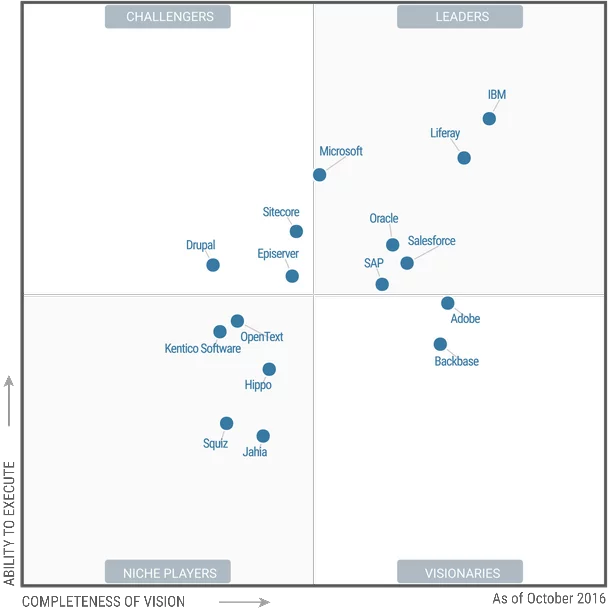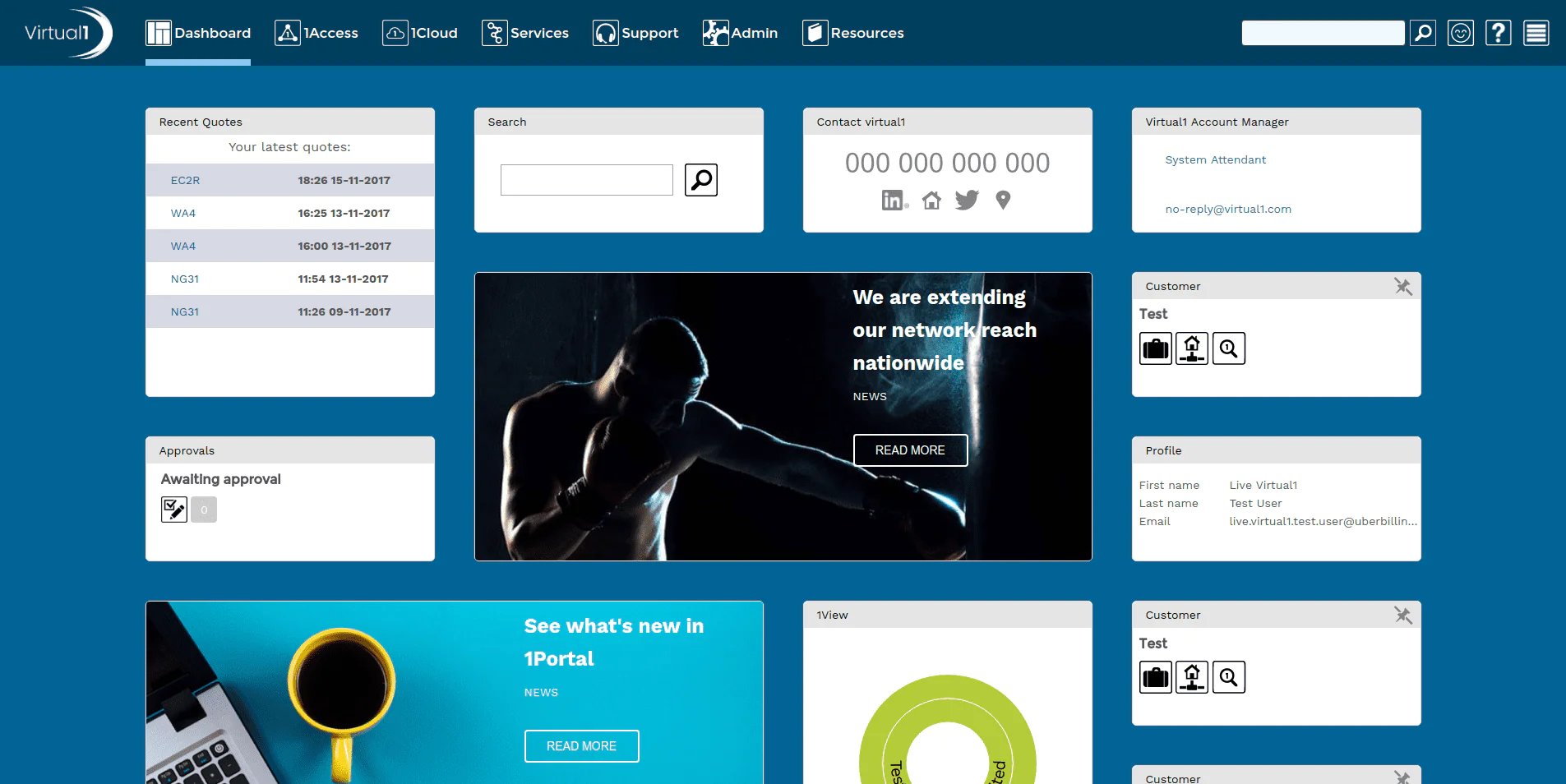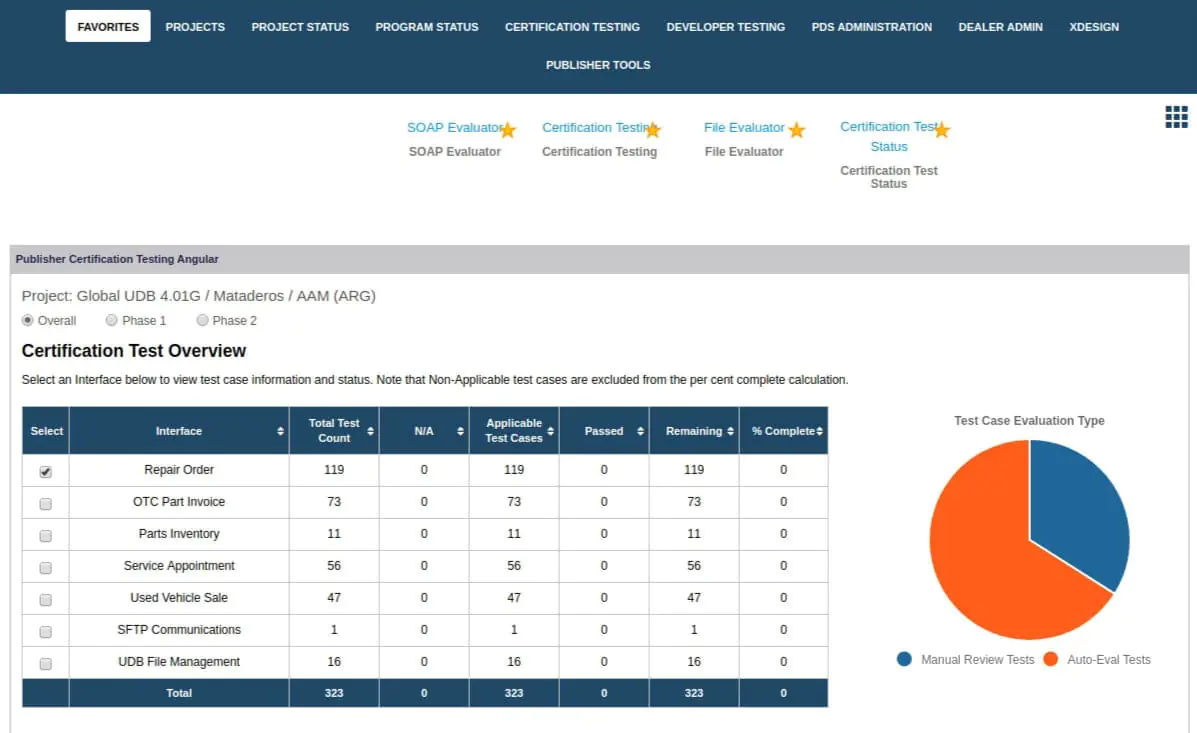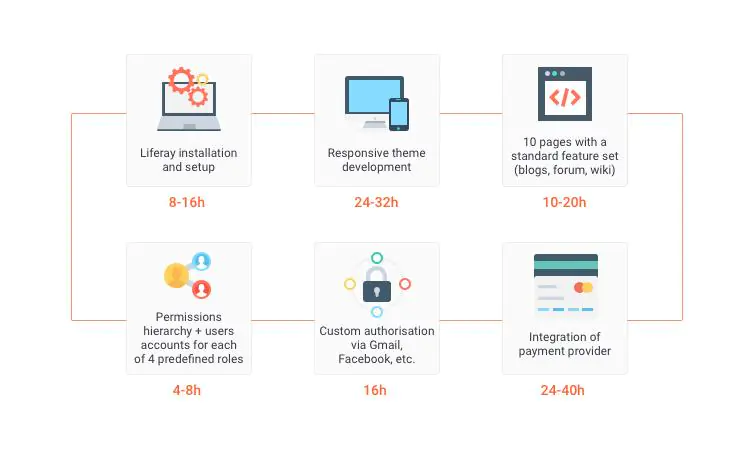Liferay Development: Boost Your Business with Portals, Portlets, and Unlimited CMS Capabilities

The diversity of enterprise software on the market is vast. Various business needs have to be satisfied. Figures say that over 326 billion U.S. dollars go to enterprise software maintenance yearly and for a good reason.
Under “enterprise software”, it is considered the applications as various kinds of automated management systems for customer (CRM) and outsourcing relationship, business process (BPM), content management (CMS), supply chains (SCM), human resources (HRM), accounting and enterprise resource planning software (ERP), business intelligence tools (BI), along with office suites and groupware.
In this post, we will focus on Content Management System (CMS) grown into a digital experience-driven platform — Liferay which merits closer attention.
What is Liferay? Discover new opportunities
According to Gartner Magic Quadrant, Liferay places a leaders’ position in Horizontal Portals, and rightly so. It is appraised by entrepreneurs for a wide range of services within Digital Experience Platform (DXP).
Image 1. Gartner Magic Quadrant, 2016 Source
Liferay is a corporate portal platform offered on the open source basis serving for content management objectives with CRM and document workflow features. It is available in two versions. Community Edition (CE) is appropriate for small enterprise-like companies which don’t have problems with rare feature updates and have a low performance daily. And Enterprise Edition (EE) provides a paid license with a set of services for clients which are big enterprises sensitive to timely functionality fill-ups.
Also, you are welcomed to read more about the difference between editions and our vision for corporate intranet portal development in our previous articles.
Portal development
Liferay Portal is an enterprise portal software product designed to provide a centralized access to the range of corporate applications in one place. Sometimes it is described as a content management system (CMS) or a platform for web apps developed in Java. Its principal goal is to power corporate intranets and extranets.
Advantages for business using Liferay portals
BusinessA portal sounds like we are surfing the space striving to worm our way out of this journey through the open gates to find the way home. For all intents and purposes, it comes to the portal development for business needs and how to turn a profit. Let’s have it all out.
Managing all corporate digital assets in one place is an interest of businesses in the era of total digitization. Change-makers, like Bryan Cheung, do amazing things for enterprises having overall functional live text and document flows which are crucial to retention.
To overcome that disorder of multifarious content, Liferay portals proved to be a consolidator of all advantageous features on the web pages like wikis, forums, blogs, document library, chats, calendars, tasks, notifications, sharing option and others gathered together under one umbrella. Liferay developers and ordinary users are fond of these social collaboration possibilities of the portal. It is possible to forge a web area with a wide range of habitual options for a group of people united in one common cause or project.
Advanced user and organization hierarchy makes up a workflow approval process is another capability worth trying it. Logging in, content contributors can easily make changes, save them and the system will send the update to a content approver before publishing. Another favored thing is that the portal can avail as a document repository keeping files and spread them through the web interface or website.
Role-based content delivery was meant here to be a relief for companies required to differentiate between registered users and guests, business customers and standard accounts while displaying web content.
Image 2. Virtual1. Liferay portal
TechLiferay portal development is carried out by a mature technology stack. From the early beginning, Liferay developers didn’t tend to use hyped technologies. Instead, the platform was written on the proven code base that has stood the test of time. The friendship between Java and enterprise requirements is strong and has been tested through years.
Liferay runs on Java. It is just necessary to download and setup Java SE to build the ecosystem. It doesn’t matter on which kind of operation system Windows, Linux (various distributions), MacOS, Open/FreeBSD, etc. the future system will be deployed. A full development kit will help you to unleash the power of Liferay portal without additional tools. It includes SDK, development studio, open sources, best practices, recipes on the official website or in the minds of developers.
Talking about the skill set of software engineers who can create a collaborative environment certified Liferay developers will cost you a grand meanwhile outsourcing development services can be got for a reasonable price.
Liferay is notable for its active community where code contributors all over the world can get a support and share their improvements which will be highly likely accepted by maintainers and be included in the next out-of-the-box major or minor version.
Portlets. 7 reasons to use them
Liferay Portlets are pluggable functional units that compose a portal. They are collected as non-overlapping portlet windows displayed in a web portal and managed there as well. And then you get a web app hosted on the portal, but is indeed a portlet.
Web apps of hidden potential
BusinessLiferay has over one hundred out-of-the-box portlets and thousand of portlets in Liferay marketplace, many of them are free. In case, there no one fits your business needs, you can inquire Liferay portlet development and have any functional customised.
Each portlet can be developed separately and with different speed building up features one by one according to business requirements. For example, Virtual1, a web portal for wholesaling telecommunication services, contains 15 times more portlets than there are active developers in their dedicated software team.
Depending on the priorities a Liferay developer advances features for the particular portlet at the same time the rest functionality remains undisturbed and without side effect. Regression doesn’t cause extra troubles.Content managers can take a breath out with a portlet structure where filling up any web page with any content and functionality and repositioning portlets becomes as easy as apple pie.
Image 3. Liferay portlet
TechIt is possible to use any of favorable technologies to develop portlets both on backend and frontend. Many software platforms allow using only an appointed controller style, database connectors, configuration style and show other boundary conditions. That definitely ties developer’s hands. When an issue crops up, this limits a search range of possible solutions greatly. For instance, if a web controller is written on Spring MVC, then the issue may be solved in a very short span due to the enormous tech documentation base and the open community that has been growing over 15 years similar to Liferay.
Each portlet works in its own sandbox. That’s why it is impossible to ruin the logic or functionality of other portlets on the same page. It potentiates upgrading or developing each of the collected units intentionally, if necessary. Portlets can interact with each other seamlessly shortening the time for development, increasing the security and it is in the best interests of overall business values.
Portlets are a part of JSRs standard (Java Specification Requests). The same portlets can work on other enterprise portal implementations or on Liferay but on the different WEB container, e.g. JBoss Wildfly. Also, it is more likely to find an appropriate specialist on the market to realize the Liferay portlet development because of the wide usage of JSRs standards in Liferay. As it is stated, the standards are in place to guide the development of protocols, interfaces, notes, etc., and to avoid a zoo of technologies.
If you hold in high regard the simplicity and easiness of content management, then Liferay portlets are a must. Live edit and drag-and-drop manipulations right on the web page allows in a playful way to create a landing page. Your responsible staff doesn’t need to know HTML, CSS, and JavaScript at a high level. Any user in charge can log into the web portal admin panel and create a necessary web page with any desirable options. It may be limited by the poor functionality of earlier versions or imagination only. Thus, portlets turn to a powerful marketing tool with a flexibly adjusted display of content.
Liferay CMS features and themes. Look and feel of your business
Liferay CMS is a set of web pages, portlets, structures, templates, themes as stated above. Here we should like to draw particular attention to the features invented for changing the appearance of content and doing it in a playful way.
Liferay Theme is a look-and-feel unit made by means of CSS, HTML, JavaScript, and FreeMarker. Default themes are nice especially in the latter versions, nevertheless, you are invited to create a custom theme for your web application. If you want to learn more, read our article about Liferay theme development. Minor changes, like animation or color of the header, can be implemented with a themelet — small and extendable piece of code which can be reused instead of modifying the entire theme.
Liferay themes as a marketing tool
BusinessThe most important concern for business in the matter of synergic communication is the potential of CMS. How to reach a continuous flow of content sharing? Let’s look into it.
You can resort to the help of a vendor which provides Liferay development services and get consulting first-hand. Companies, which have mastered their technique serving enterprises, automate most of the content flow. Liferay CMS capabilities benefit from cutting down expenses for development and unshackling content managers.
The big deal is that themes have sub-themes and color schemes which let make minor tweaks in look and feel for a particular web page community or website in one theme. It is not necessary to develop a new theme from scratch, to make a few changes and register them in the color scheme will be enough.
It has an easy theme setup. You can order your ad-hoc theme from a development company or download it from the Liferay marketplace.
The main visual component on the web page is a Web Content. It can be reusable on different pages or even the same web content on the same page if you ever need it. Static or dynamic, it is actually a custom portlet. Due to the specific technical mechanism called structures and templates, it is possible to create a pattern reusable by the content manager. For example, a Senior Liferay developer can create any structure and template for making a carousel for demonstration images and texts. The content manager can use this template and multiply its functionality over the website with various settings. It saves cost for human resources support. Imagine, to develop one portlet takes from 4 hours till several dozens of hours and to copy the pattern takes around 1 hour. The value is obvious.
Image 4. Liferay web page
TechStructures and templates have access to any of Liferay APIs, but portal settings can restrict the list of those APIs. Basically, it is secure and flexible.
The flexibility of Liferay themes simplifies the efforts due to the scope of generic themes which can be applied to the particular web page, community and organization or website. Written generic themes can be combined in different applications instead of building the new custom sections in one big theme from scratch. They are valuable in being built simultaneously by multiple independent developers. Modularity furthers components to be written in parallel and impairs the undesirable regression. If the Liferay developer amends theme A, then theme B remains untouched. It’s pretty convenient.
MarketingAdvanced content with Liferay structures and templates allow creating beautiful image and video galleries, sliders, accordions (FAQs), pop-ups, and other valuable marketing toolsets. Marketers and content managers can alter the display of dynamic data not seeking the assistance of developers except for cases when development services are required for creating the structure or template once. Managers responsible for content updates are able subsequently to do them on their own.
How much does it cost to develop Liferay enterprise portal?
Liferay is an innovative and one of the most popular solutions for enterprise content management activities. It can be available for a reasonable price with the Java Liferay developers assistance. The service delivery is not so complicated and expensive, as it may seem, at first glance. Below, it is estimated the most common feature set of the Liferay portal the Aimprosoft team was asked to develop.
Estimate for a basic Liferay feature set development of Community or Enterprise Edition
Image 5. Estimate for a basic Liferay feature set development of Community or Enterprise Edition by Aimprosoft
As figures say, any enterprise is about 100 hours away from the collaborative portal with small but so indispensable capabilities. 1 Senior Liferay developer for a website with a functionality which is supposed to be created from scratch by a bunch of developers for several months. From our practice, it takes around 2-3 months for development of the average project by the team of 2-3 senior Liferay developers.
Wrapping up
Liferay portals are a function of three factors: customer experiences, business operations, and digital strategy. In the enterprise growing omnichannel experiences for prospects and customers, bridged offices tied under one umbrella and easy to handle CMS is of high importance. Then nothing stops you from taking your course. If your company is ready for positive changes, outsourced Liferay developers might be the gold mine you’re definitely may try.









